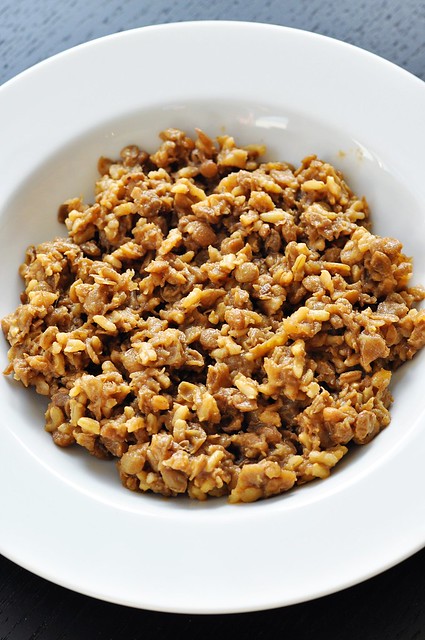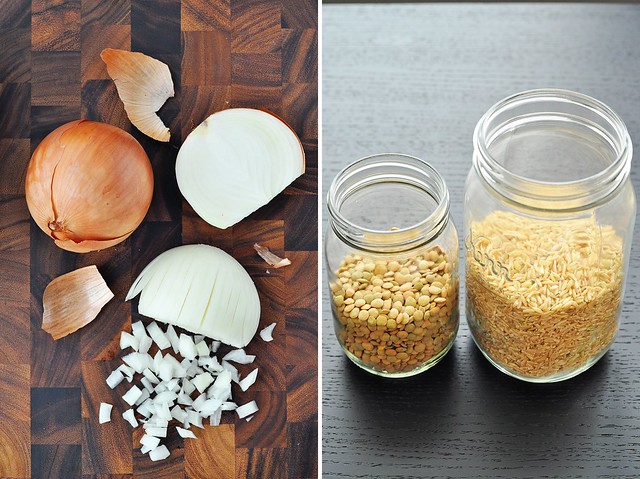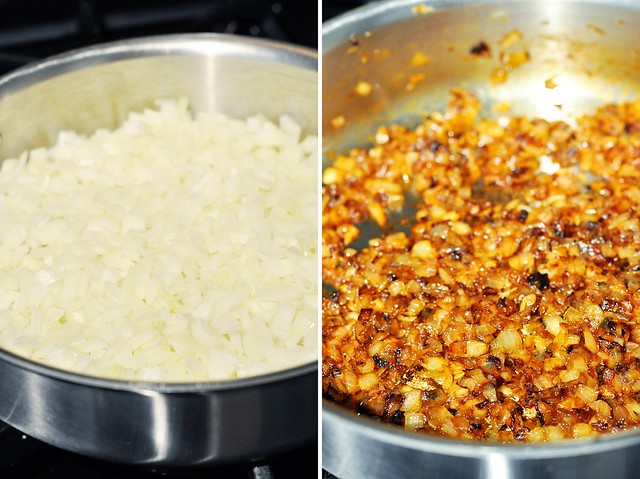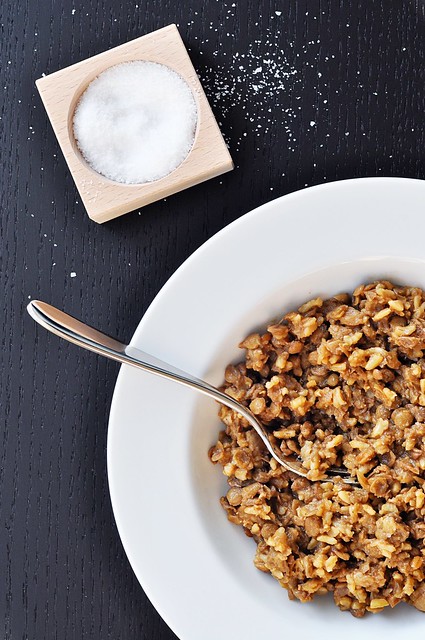One of the biggest misconceptions about plant-based (or generally healthy) eating is that it is expensive. Nothing could be further from the truth. In fact, our grocery spending has decreased over the past few months—and that’s despite buying organic most of the time. Plus, since it’s not so convenient anymore, we also spend less money dining out. Savings all around!
Some of the most expensive things you can buy at the grocery store or farmer’s market are butter, milk, meat, and cheese—gosh, is cheese ever expensive! Even eggs, which most people think of as a cost-effective staple, cost a pretty penny when you’re attempting to buy them conscientiously.
Things like beans and grains, however, are so gloriously budget-friendly that it’s a wonder more people don’t go vegan for the sole purpose of saving some dough. If you buy your legumes dried, and especially if you hit up the bulk bins, you’ll save even more. But really, even canned beans are a decent value if you’re looking for convenience.
And produce? I feel like this is where people suffer the most sticker shock. I truly believe that this has less to do with the actual price of the veggies, and more to do with the value that people place upon them. When you don’t see the value in eating something, any price is going to be too high. Many people will look at a bunch of kale, deem it too “expensive”, and then turn right around and spend the same amount of money on a bag of processed junk or a jug of carbonated corn syrup. Not to mention, many also have a history of buying produce, not eating it, and allowing it to wilt to mush in the crisper.
As long as you’re only purchasing what you know you’ll eat (you can never eat too many veggies!) or finding creative ways to use up the excess (like soups & smoothies), produce is definitely cost-effective—and it has the best nutritional bang for your buck of anything you can possibly buy. How’s that for value? If you’re really strapped, it doesn’t always have to be organic either. Check out the Dirty Dozen and Clean Fifteen for an idea of when you might want to spend or save.
Personally, I don’t even leave the produce section on most of my grocery trips. When I do, it’s usually to visit the bulk bins and stock up on legumes, grains, nuts, and seeds. Occasionally I’ll pop over to the refrigerated section and grab a block of tempeh or tofu, or a bag of berries from the freezer case. Despite the misconceptions, healthful food and budget-conscious shopping are not mutually exclusive. We track our spending carefully; the numbers don’t lie.
Of course, the fun part is what you do with all your goodies once you get them home.
One of our favorite budget-friendly, plant-based meals (in addition to the 3-Bean Chili) is mujadara. It takes only three ingredients to make, plus a little EVOO and salt, and all of them are cheapy-cheap: lentils, brown rice, and onions. Pantry staples. See? You don’t even have to stress about the produce on this one.
It’s not only one of our favorite budget-friendly meals, it’s one of our favorite meals, period. Like the chili, it’s something that I make often, and yet Chris is always thrilled to learn that we’ll be having it for dinner. If I’ve told him in advance, I get e-mails throughout the day proclaiming his excitement over the impending mujadara.
But how could something so insanely simple possibly be that good? The secret lies in the onions.
You caramelize the ever-loving life out of them. And then you caramelize them a bit more. And then you burn them a little. What starts out as handful upon handful of crisp, sharp-smelling, white chunks, reduces down into a meager portion of sticky, sweet, burnished and occasionally blackened little bits. It’s these tiny morsels of concentrated flavor that make mujadara irrationally, irresistibly wonderful.
It also doesn’t hurt that mujadara is mighty healthy. Both legumes and brown rice are great for helping to maintain healthy cholesterol levels, and the dish as a whole is packed with fiber, protein, iron, and minerals. Paired with a big green salad, it’s a meal that you can truly feel good about enjoying.
Both your heart and wallet are sure to thank you for serving up this winning combo of earthy lentils, nutty brown rice, and candy-sweet caramelized onions. And if my experience is telling, you should receive a few kind words from your dining companions as well.
Mujadara
Adapted from Orangette
Serves 4
Despite the simplicity of the ingredients, mujadara does take some time to bring together. Fortunately, this is mostly inactive time. Walk away and do some reading in between stirring the onions–you really can’t overcook them. Start everything a couple hours before you’d like to eat. If it surprises you by being done early, no worries. Mujadara can hang out for a bit and reheats nicely.
2 tablespoons EVOO
2 large onions, chopped
1 cup brown or green lentils, picked through and rinsed
1/2 cup long-grain brown rice
2 cups water, plus more as needed
Kosher salt
Heat a deep saute pan (or a wide-bottomed pot) over medium heat. Add the olive oil and the onions and saute briefly. Spread the onions to cover the surface of the pan evenly and allow to cook for several minutes, until beginning to brown. Stir and repeat this process, spreading the onions and cooking, until they are deeply browned with a few blackened bits. This will take some time, anywhere from 30 minutes to an hour.
While the onions are working, place the lentils in a medium pot and cover with water by a couple inches. Bring to a boil, reduce the heat, and simmer the lentils for 20 minutes, until tender. Drain and set aside.
Once the onions are darkly caramelized, stir in the rice. Toast the rice for a minute or two, and then add in the cooked lentils and the 2 cups of water. Stir everything together, scraping up any burnt bits from the bottom of the pan, and season with a couple generous pinches of salt. Bring to a boil, cover, reduce the heat and simmer until the water has been absorbed and the rice is tender, about 40 minutes. Peek under the lid and give everything a stir occasionally. If the rice isn’t yet done and it looks a bit dry, add a splash of water; if the rice is tender but everything still seems too wet, allow to cook for a few minutes with the lid off so the water can evaporate.
Serve with additional salt for sprinkling as desired.




